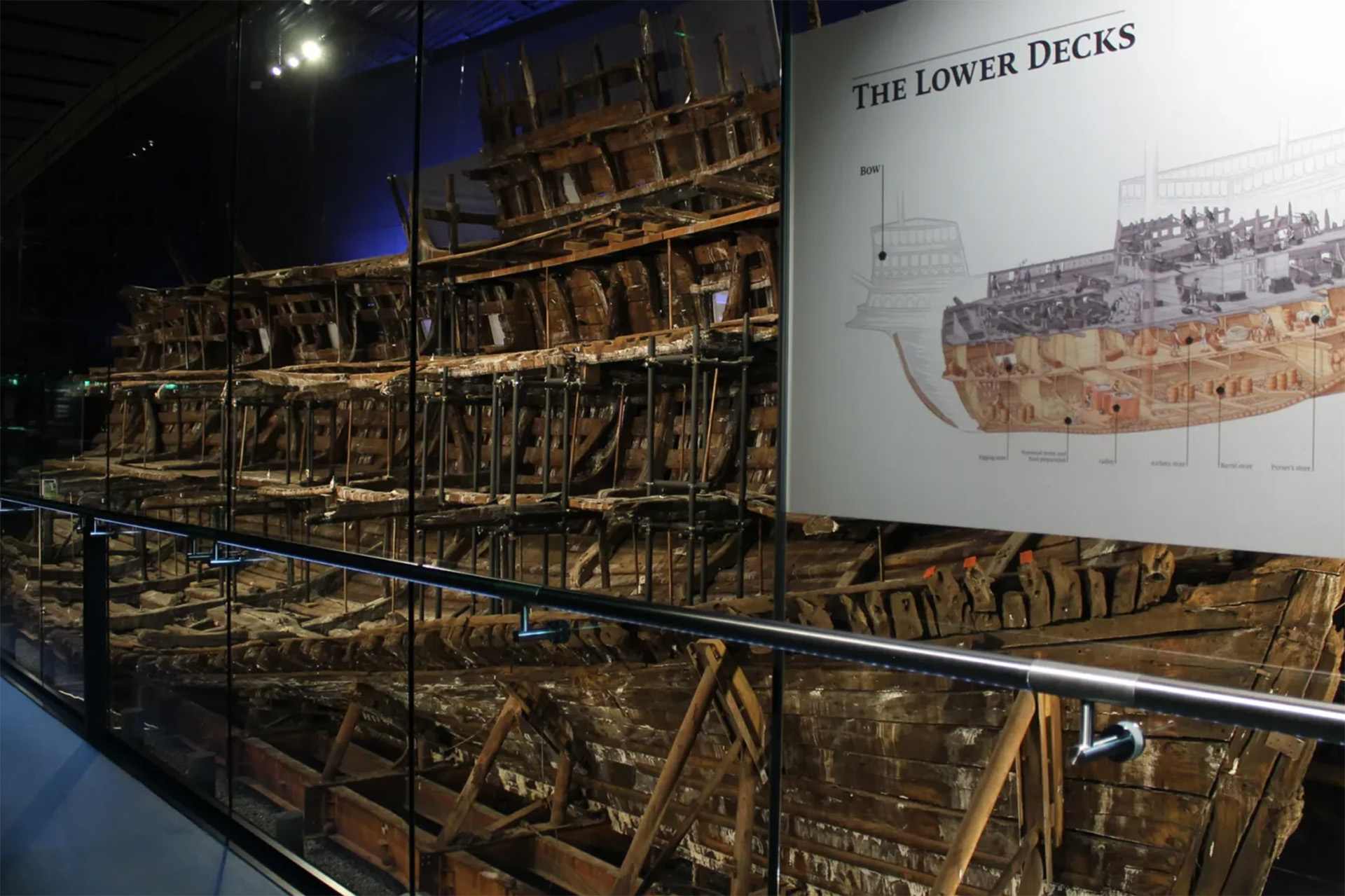The Mary Rose Museum, Portsmouth

19th July 2016, the Mary Rose Museum has re-opened with a full uninterrupted view, after a £5.4m revamp. Since being raised from the Solent in 1982, the Mary Rose, Henry VIII’s flagship has undergone 34 years of conservation and can now be viewed through floor-to ceiling windows and an air-locked viewing balcony at the purpose built museum in Portsmouth Historic Dockyard.
The Mary Rose, a Tudor warship built for the English navy of King Henry VIII in 1510 was in service for 34 years and sank in 1545. Rediscovered in 1971 the wreck of the Mary Rose was raised in 1982 and towed into her home port in Portsmouth, England into a covered dry dock to begin conservation. And so began more than 34 years of conservation work, where for over 30 years ‘she’ was sprayed with fresh water and wax to displace all the water in the timber cells so they would never collapse. A permanent museum building was constructed over the ship and in 2013 the sprays were finally turned off. The ship was controlled air dried over the next 3 years and on 20th July 2016 ‘she’ was revealed to the public to allow them a completely clear and uninterrupted view.
This phase of work includes the introduction of an audio-visual installation to enhance interpretation and visitor experiences, for which a creative team led by exhibition designers Real Studios were brought in to tell the story of the ship’s crew going about their daily routines both at war and peace.
More than sixty short scenes were filmed and produced by Graham English & Company and projection mapped by Sysco AV into the relevant cabins on the ship’s hull. Together with lighting design from Adam Grater of DHA Designs and an accompanying atmospheric soundscape produced by Peter Key Sound Design & Production, the ship is brought to ‘life’ for the visitor at intervals throughout the day.
Tasked with providing a discreet, and unobtrusive audio solution, Peter Key chose to enhance the existing sound installation of overhead loudspeakers in the two enclosed viewing walkways – the Main and Lower Decks. With the ship now in full view Peter Key commented, “ I felt that sound should not all be heard from above but should also appear to play from in front of the visitor in line with the projected images”.
“This meant we needed to excite individual glass panels of the viewing corridor for the entire length. This was quite a tall order, not only was the laminated glass more than 25mm thick, but the solution had to be invisible, so that it did not obscure the view of the Mary Rose”, continues Peter Key.
“I discussed the project with Sound Directions for their expertise in this area and the recommendation was to use MSE Audio’s SolidDrive SD1g Surface Exciters. Extensive tests proved that such a mass of glass could be excited by a relatively small transducer device to provide good quality and distortion free audio. The small form factor and clean cylindrical lines of the devices enabled them to blend into the glazed environment”, added Peter Key.
Robert Lapraik, Deputy Chief Executive for the Mary Rose Museum added, “ We are delighted that the combination of sound and projection not only brings the ship to life, but also re-establishes the relationship between the ship and the thousands of real objects in the context gallery walkways”.
Tags:
Case Studies
18-Aug-2016 09:30:00

Comments